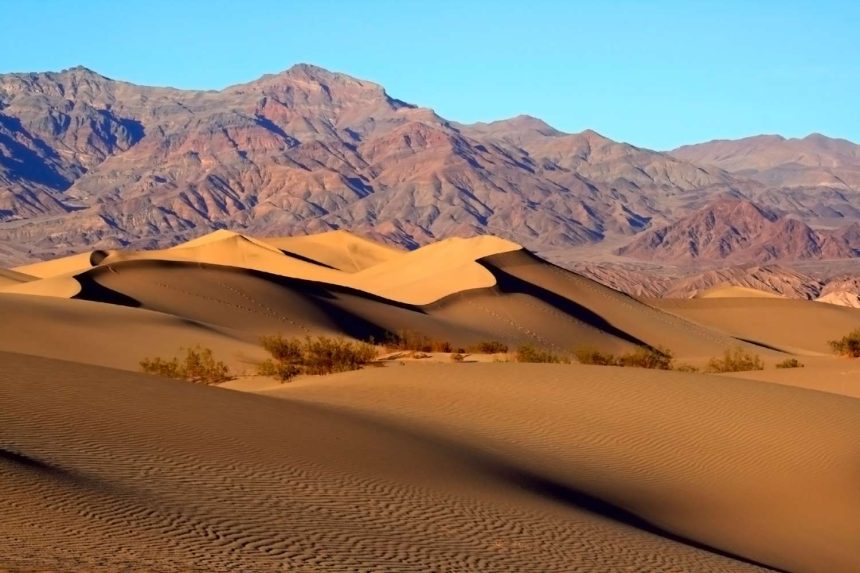The Top Ten Hottest Places On Earth transports you to the most fiery locations on Earth where temperatures reach unthinkable heights. Discover legendary hot areas like Death Valley in California, known for striking a jaw-dropping 134°F, or the sun scorched Lut Desert in Iran, where ground temperatures could rise above 159°F. Travel into Ethiopia’s searing Danakil Depression, a bizarre terrain of volcanic heat, and experience Kuwait City’s sweltering streets’ great warmth.
Revealing how intense heat shapes locations like Mali’s Timbuktu and Australia’s Outback, so demanding existence with constant sun and limited water. Discover from unusual survival tactics to cultural customs the amazing ways plants, animals, and humans negotiate these hostile environments. Rich in fascinating details, it also explores the science of record-breaking temperatures and the expanding impact of climate change on these hellfire areas. Perfect for geography buffs, adventure seekers, or anybody interested in the extremities of the planet, this material provides doable advice for responsibly visiting these most popular locations. Set out this scorching journey to learn about the unadulterated force of the most beautiful settings from nature and their unique qualities.
The Top Ten Hottest Places On Earth
10. Aruba Airport, Netherlands Protectorate

Nestled in the southern Caribbean, Aruba Airport on the island of Aruba boasts an average annual temperature of 28.1°C (82.6°F). Its tropical climate, fueled by proximity to the equator, delivers consistent scorching temperatures year round. Constant trade winds provide a gentle breeze, but the island’s low rainfall and abundant sunshine maintain a warm, dry environment. The dry season from January to August sees minimal precipitation, while the wet season from September to December brings light showers, rarely disrupting the heat. Aruba’s flat terrain and coastal location amplify solar radiation, contributing to its status among the hottest places.
Famous for pristine beaches, coral reefs, and vibrant marine life, Aruba thrives as a tourist haven. Activities like windsurfing, snorkeling, and exploring Arikok National Park draw millions annually. The island’s economy, centered on tourism, supports a population of about 100,000, with infrastructure like shaded resorts and air conditioned venues designed to combat extreme heat. Local flora, such as cacti and divi divi trees, and fauna like iguanas, are adapted to the arid conditions. Climate change poses risks like rising sea levels, but Aruba’s stable warmth and sunny allure make it a must visit for those seeking the world’s hottest places.
9. Escuintla, Chiapas State, Mexico
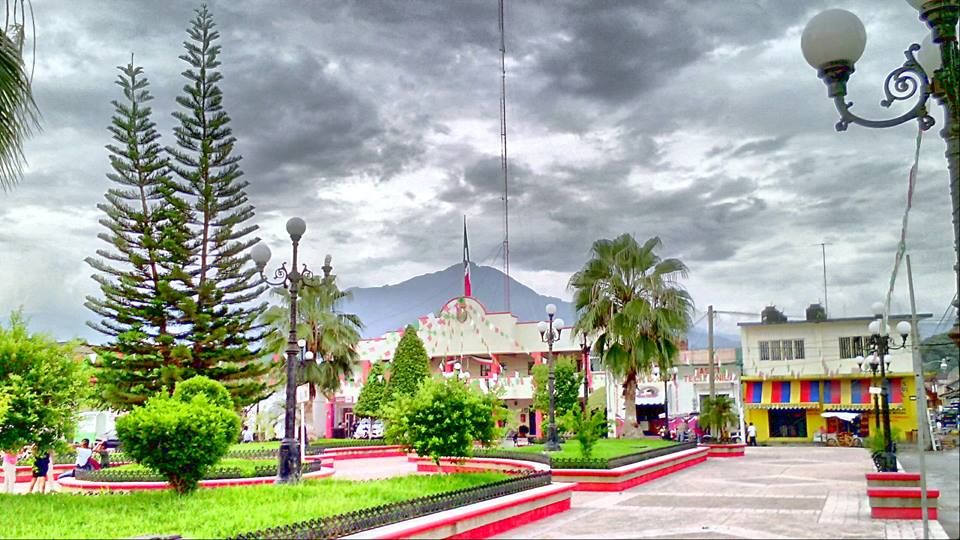
Located near Mexico’s border with Guatemala, Escuintla in Chiapas State averages 28.2°C (82.8°F) in a tropical climate. Highs soar to 35°C (95°F) in April, with a wet season from May to October bringing heavy rainfall and humidity. The region’s lush vegetation, including coffee plantations and tropical forests, thrives in the scorching temperatures, supported by fertile soils and mountainous terrain. Proximity to the Pacific Ocean adds moisture, intensifying the heat, while low elevation ensures consistent warmth, securing Escuintla’s place among the hottest places.
The economy revolves around agriculture, with coffee, mangoes, and bananas flourishing in the extreme heat. A population of roughly 100,000 adapts with heat tolerant crops and traditional practices like siestas to avoid peak sun hours. Visitors are drawn to nearby natural wonders, such as waterfalls and volcanic landscapes, though infrastructure like fans and open air homes helps locals cope. Climate change threatens with more intense rainy seasons, but Escuintla’s agricultural resilience and vibrant ecosystems highlight its role in the world’s hottest places, offering a glimpse into life in a tropical furnace.
8. Tarawa, Kiribati
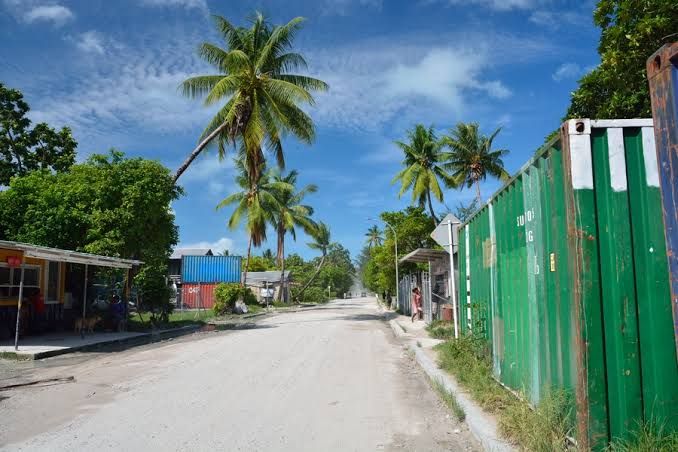
Tarawa, the capital atoll of Kiribati in the central Pacific, averages 28.3°C (82.9°F) in a tropical maritime climate. Its equatorial location ensures stable scorching temperatures, rarely dipping below 25°C (77°F), with high humidity amplifying the heat. Rainfall from November to February provides some relief, but the consistent warmth defines daily life. The atoll’s coral reefs, lagoons, and sandy islets create a stunning backdrop, supporting a fishing based economy and tourism. Tarawa’s low elevation and oceanic surroundings trap heat, making it one of the hottest places on Earth.
With over 50,000 residents, Tarawa adapts to extreme heat through open air homes, water conservation, and reliance on marine resources. Coconut palms and breadfruit trees thrive, while fish and seabirds dominate the ecosystem. Visitors explore historical World War II sites and vibrant markets, but the heat demands precautions like hydration and sun protection. Climate change, with rising sea levels and warmer oceans, threatens this Pacific gem. Tarawa’s unique blend of cultural heritage and relentless heat makes it a compelling destination for those chasing the world’s hottest places.
7. La Union, El Salvador
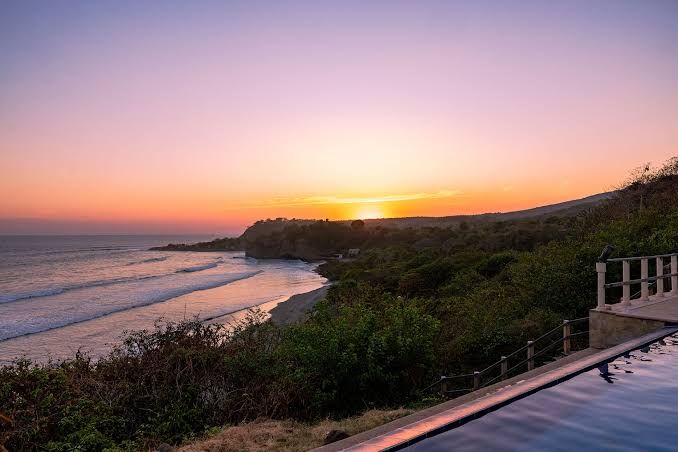
Situated near the Gulf of Fonseca in eastern El Salvador, La Union averages 28.8°C (83.8°F) in a coastal tropical climate. Highs reach 35°C (95°F) in April and May, with a wet season from May to October bringing rainfall to temper the scorching temperatures. The gulf’s warm waters moderate the climate slightly, but high humidity intensifies the heat, securing La Union’s spot among the hottest places. Coastal plains and proximity to the Pacific drive the warm, moist conditions, creating a challenging yet vibrant environment.
La Union’s economy thrives on its trade port, fishing, and tourism, with a population of about 100,000. Beaches and marine life, including dolphins, attract visitors, while shaded markets and breezy homes help locals manage extreme heat. Mangroves and tropical birds flourish in the warm climate, showcasing ecological resilience. Climate change brings risks like stronger hurricanes, but La Union’s coastal energy and heat adapted infrastructure make it a dynamic entry in the hottest places lineup, offering insights into life in a tropical hotspot.
6. Mezyed, U.A.E.

In the Al Ain region of the U.A.E., Mezyed averages 29.2°C (84.6°F) in a hot desert climate. Summers soar above 40°C (104°F), with winters mild at 20 25°C (68 77°F). Minimal rainfall and intense solar radiation, typical of the Arabian Peninsula, drive the scorching temperatures. The oasis setting, surrounded by dunes, supports date palms and historical sites, blending natural beauty with cultural heritage. Mezyed’s low elevation and arid conditions make it one of the hottest places, where heat shapes every aspect of life.
The U.A.E.’s advanced infrastructure, including air conditioning and desalination, supports a growing population and tourism. Visitors explore forts, souks, and lush gardens, while locals rely on heat tolerant agriculture. Desert species like camels and falcons thrive, adapted to the extreme heat. Climate change exacerbates water scarcity, but Mezyed’s modern adaptations and desert allure draw adventurers to this scorching oasis, cementing its place among the world’s hottest places with a unique mix of tradition and innovation.
5. Wyndham Port, Western Australia
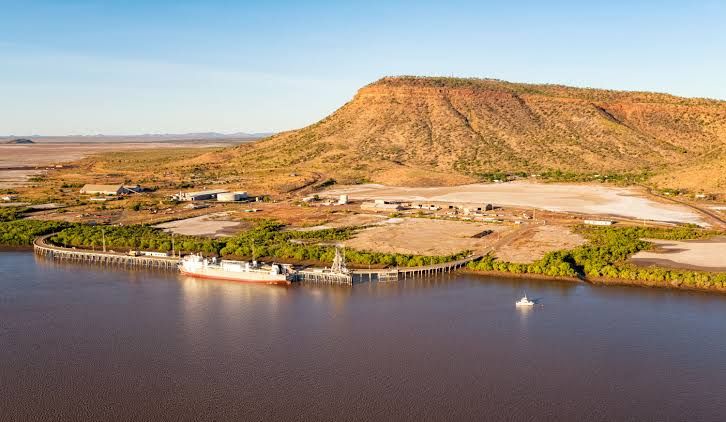
In the remote Kimberley region, Wyndham Port averages 29.4°C (84.9°F) in a tropical savanna climate. The dry season brings highs above 35°C (95°F), while the wet season from November to April adds humidity and rain. Isolation, low elevation, and intense solar radiation amplify the scorching temperatures, making it one of the hottest places. The rugged landscape, with gorges, rivers, and the Bungle Bungle Range, attracts nature lovers, while the town’s small population relies on tourism and mining.
Infrastructure like shaded facilities and air conditioning helps residents cope, while heat tolerant species, such as kangaroos and eucalyptus, dominate the ecosystem. Visitors need sun protection and hydration to explore safely, as the extreme heat can be unforgiving. Climate change intensifies wet season storms, but Wyndham’s untamed beauty and blistering climate make it a standout in the hottest places guide, offering a raw glimpse into Australia’s scorching outback.
4. Guaymaral, Colombia

Near Colombia’s Caribbean coast in the Magdaena Department, Guaymaral averages 29.4°C (84.9°F) in a tropical climate. High humidity and proximity to the sea ensure scorching temperatures, often above 30°C (86°F), with minimal seasonal variation. The lush, green landscape supports banana and tropical fruit production, thriving in the extreme heat. Coastal plains and warm Caribbean waters drive the consistently warm climate, earning Guaymaral its place among the hottest places.
Agricultural communities adapt with crops suited to the heat, while open air homes and siestas help manage daily life. Visitors enjoy vibrant markets and nearby beaches, but the humidity demands precautions. Tropical birds and mangroves flourish, showcasing biodiversity resilient to scorching temperatures. Climate change threatens with rising sea levels, but Guaymaral’s economic vitality and tropical charm make it a key destination for exploring the world’s hottest places, blending nature and culture in a steamy paradise.
3. Klong Thoey, Bangkok, Thailand

Klong Thoey, a district in Bangkok, averages 30.3°C (86.5°F) in a tropical savanna climate. Highs hit 38°C (100°F) in April, with monsoon rains from May to October adding humidity to the scorching temperatures. The urban heat island effect, driven by concrete, asphalt, and industrial activity, intensifies the heat, making it one of the hottest places. Bangkok’s cultural landmarks, like the Grand Palace and bustling markets, draw millions, despite the oppressive climate.
With over 10 million residents, the city adapts with air conditioning, indoor malls, and night markets to avoid peak heat. Tropical plants and urban wildlife, like monitor lizards, thrive in the warmth. Visitors need lightweight clothing and hydration to explore safely, as humidity amplifies the extreme heat. Climate change brings heavier monsoons, but Klong Thoey’s vibrant energy and heat adapted lifestyle make it a dynamic entry in the hottest places lineup, offering a blend of urban life and tropical intensity.
2. Makkah (Mecca), Saudi Arabia

In Saudi Arabia’s Hejaz region, Mecca averages 30.7°C (87.3°F) in a hot desert climate. Summers exceed 40°C (104°F), while winters range from 18°C (64°F) to 30°C (86°F). The valley setting traps heat, and minimal rainfall amplifies the scorching temperatures, securing Mecca’s rank among the hottest places. As Islam’s holiest city, it hosts millions during Hajj, with air conditioned mosques and tents easing the heat for pilgrims.
A population of 2.4 million swells during pilgrimages, supported by heat adapted infrastructure like shaded walkways. Desert plants and animals, such as date palms and lizards, are suited to the arid climate. Visitors require sun protection and hydration, especially during Hajj, when extreme heat peaks. Climate change worsens water scarcity, but Mecca’s spiritual significance and resilience to blistering climates make it a profound destination for exploring the world’s hottest places, blending faith and endurance.
1. Dallol, Ethiopia
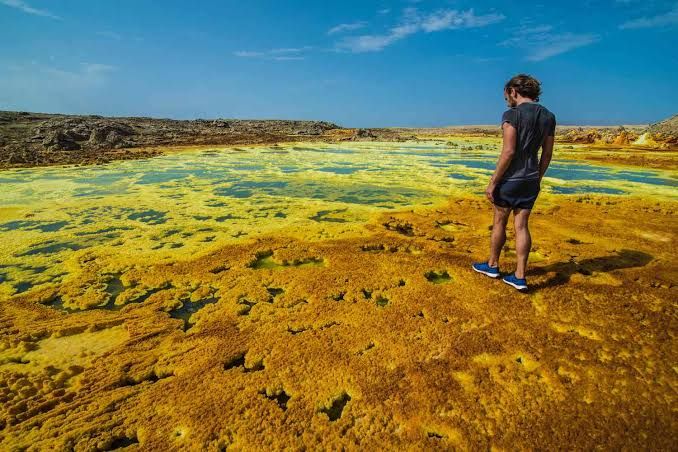
In Ethiopia’s Danakil Depression, Dallol olds the title of the hottest place on Earth, averaging 34.4°C (94.0°F). June highs reach 46.7°C (116.1°F), with a hyperarid desert climate and minimal rainfall. Low elevation, at 130 meters below sea level, and hydrothermal activity, including hot springs and geysers, drive the scorching temperatures. The surreal landscape, with colorful mineral deposits and salt pans, attracts geologists and adventurers, cementing its status among the hottest places.
Once a potash mining site, Dallol is now a ghost town, with camel caravans harvesting salt. The harsh climate supports minimal life, but extremophile microbes thrive in acidic springs. Visitors need specialized tours, hydration, and heat gear to explore safely, as the extreme heat is relentless. Climate change may intensify aridity, but Dallol’s otherworldly beauty and record breaking heat make it the ultimate destination for those seeking the world’s hottest places, offering a glimpse into nature’s fiery extremes.

